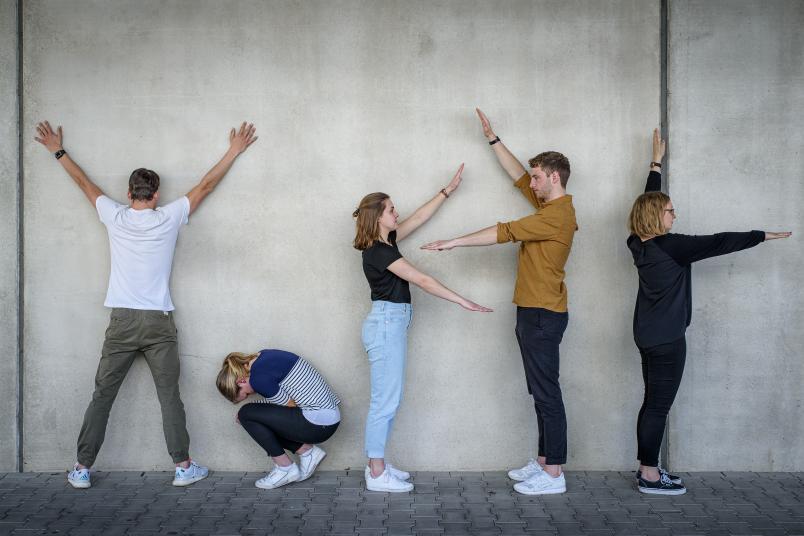
Sport science
Learning through the body
Students attending Antje Klinge’s courses don’t learn sport in the traditional sense of the word. Rather, they learn a lot about themselves.
As Professor for Sports Pedagogy and Sports Didactics, Antje Klinge trains future teachers. Her main concern is to raise their awareness of the fact that there is more to sports than physical performance, an athletic physique and, most importantly, competitions. Rather than “sports”, she prefers to refer to it as movement and playful moving actions. She frequently asks her course participants to assume new perspectives – quite literally, as this may involve the men and women contorting around concrete blocks, sticking their heads into cubby holes, or crawling into lockers in the library. The effect is: they learn something new about themselves and their environment through their body. Rubin, the RUB’s science magazine, has published a report on Antje Klinge’s work.
Fear of embarrassment
Antje Klinge was never a top athlete; her profession is creative dance. Rather than specific styles of dancing, the decisive factors are improvisation and exploring one’s own scopes of movement and play. Students who have been pursuing competitive sports for many years often have reservations against such exercises – for fear of being clumsy and, in the worst case scenario, of embarrassing themselves. “Still, most of them realise soon enough that their concerns are unfounded. Some even really come into their own,” explains the researcher.
Playing shapes identity
Her observations in the courses as well as in physical education classes at school have shown that dancing does something to humans: “Something happens to their identity. They present themselves differently than in traditional types of sport, more as individuals,” says Klinge. She wanted to learn more about this correlation between playful movement and the development of identity. By studying specialist literature, she realised that the body plays a significant role as an instrument of education. “When we make new experiences through it, we might at first do a double-take; but then we accept that we have to relearn and assume new perspectives,” says Antje Klinge. Her objective is to visualise this concept to her students.
Why just run around in circles?
The first step is to move differently in a gym than one would usually do. “When I ask students to warm up at the beginning of class, almost everyone automatically starts running anticlockwise in circles. I then explain to them that it doesn’t have to be like that. They can just as well run clockwise or backwards, zig-zag through the gym or cross it any way they like,” says Klinge, who is certain that even this simple exercise activates educational processes.
The unfamiliar triggers thought processes
Entrenching this multiperspectivity in her students’ heads and bodies is important to Antje Klinge – especially when it comes to teacher training. This is because the role of PE teachers-to-be won’t be that of coaches, but that of educators who teach movement, play, and sports. “Physical education teachers have a dual function,” explains the professor. “On the one hand, they are supposed to enable children to explore extracurricular movement culture independently, i.e. play sports; on the other hand, the children are meant to have the opportunity to develop their potential and to explore their movement abilities.” Antje Klinge intends to raise this awareness with her courses and seminars, and she is banking on the potential of learning through the body.